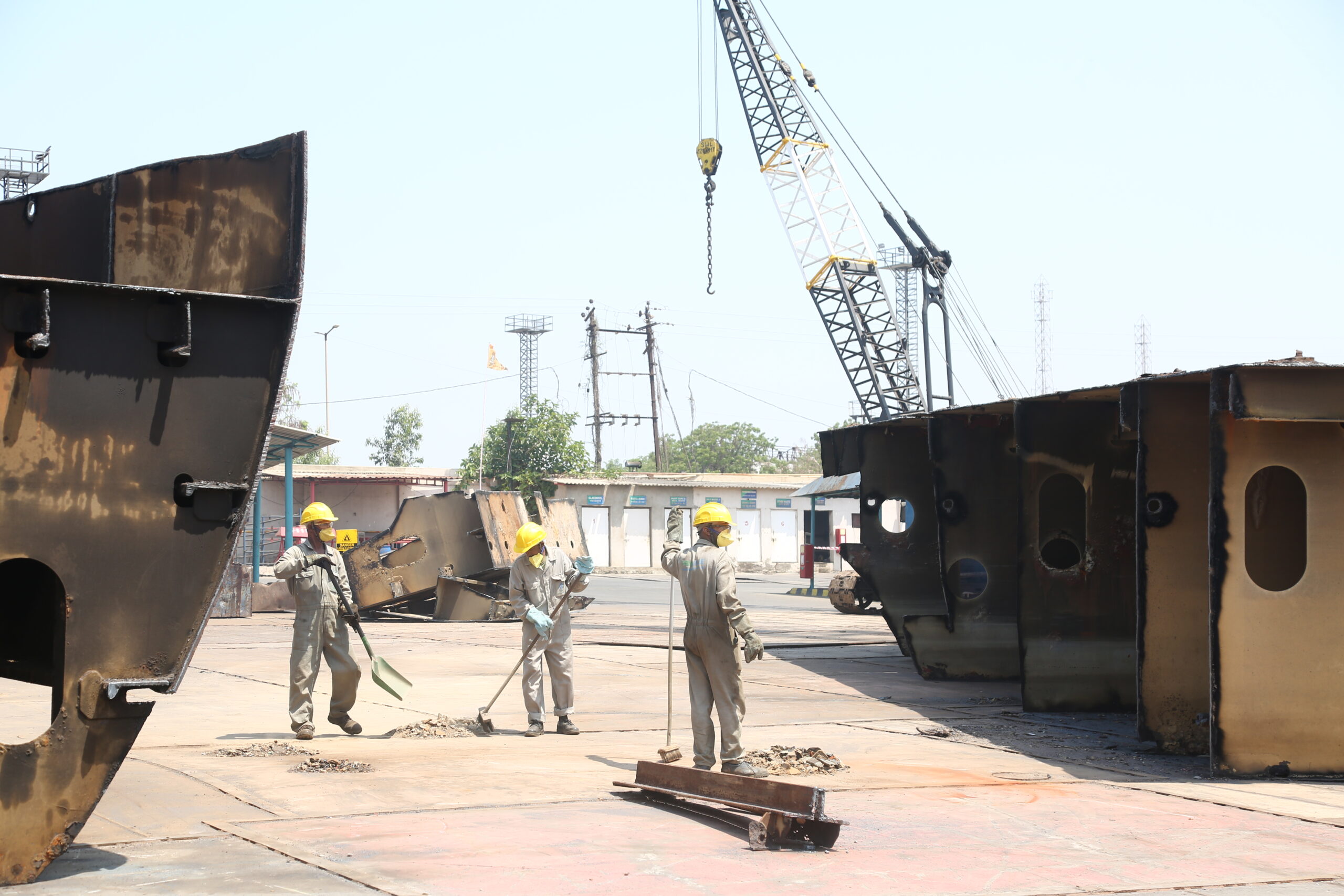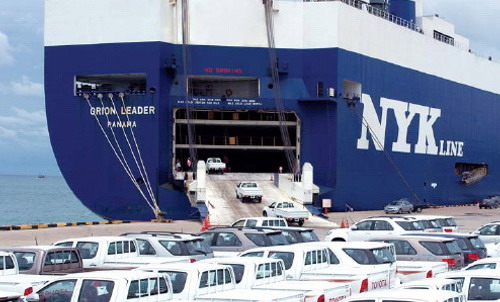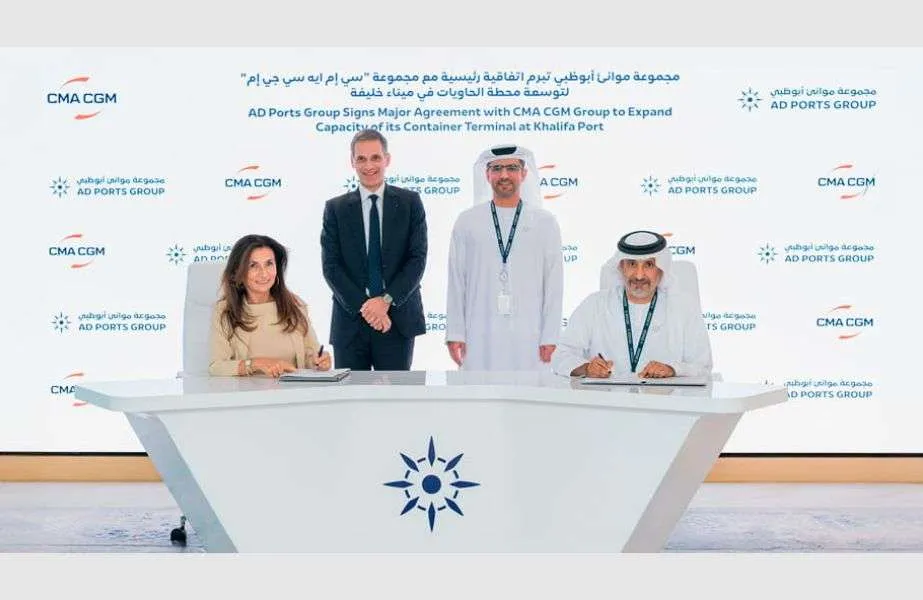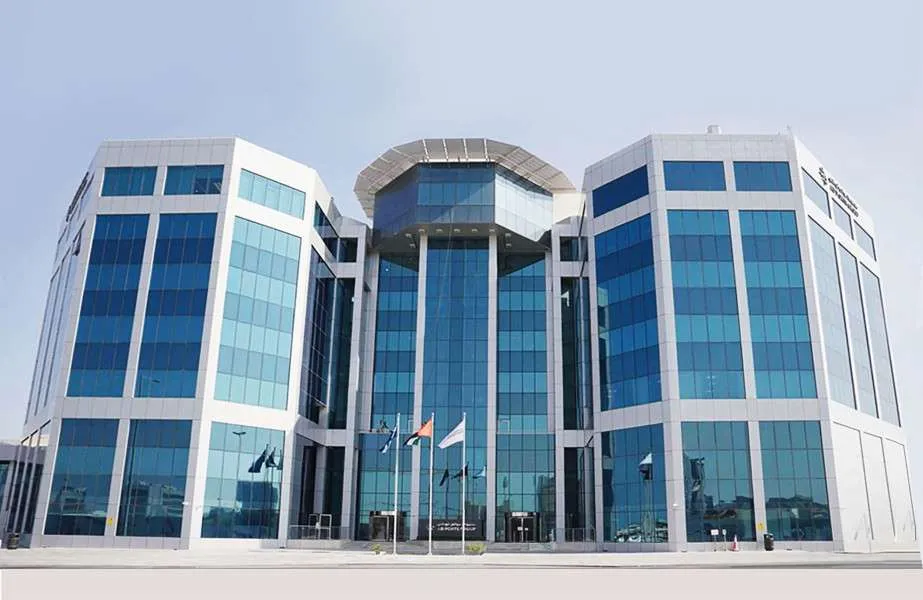Alang Ship Recycling Industry Sees Signs of Recovery with Surge in Vessel Weight
After years of stagnation and a prolonged downturn, India’s Alang ship recycling industry is witnessing faint but visible signs of revival. Fresh government data reveals that while the number of ships arriving at the world’s largest ship-breaking yard has seen only a marginal increase, the cumulative weight of vessels brought in for dismantling has risen sharply, offering a much-needed boost to an industry that has been grappling with one of its deepest crises.

According to official figures released by the Gujarat government, a total of 56 ships with a combined Light Displacement Tonnage (LDT) of 566,569 metric tonnes were beached at Alang for dismantling between April and September 2025. This compares with 53 ships weighing 389,239 metric tonnes LDT during the same period in 2024. The figures indicate that while the ship count grew by only three, the weight of vessels surged by 45.56% year-on-year, largely due to the arrival of bulkier ships such as gas carriers and tankers.
The data also highlights that September 2025 was the busiest month in terms of vessel weight recorded at Alang over the past two years. That month alone accounted for 12 ships weighing a combined 164,932 metric tonnes LDT, a figure significantly higher than the 45,363 metric tonnes reported in September 2024.
A Ray of Relief for a Struggling Industry
The increase in incoming tonnage has offered a glimmer of hope for ship recyclers who have endured a decade of declining volumes. Alang reached its peak in 2011–12, when as many as 415 ships were dismantled, marking the golden age of India’s ship recycling industry. But since then, volumes have steadily fallen, culminating in just 113 ships recycled in 2024–25, the lowest figure in over 20 years.
For many industry participants, the September rebound has provided some breathing space. Scrap generated from larger ships translates into higher steel recovery, which is a vital raw material for re-rolling mills across western India. These mills have long faced supply shortages, and the recent inflow is expected to ease pressures in the coming months.
“September was unusual in terms of the size of vessels arriving,” said Haresh Parmar, Joint Secretary of the Ship Recycling Industries Association (India). “Gas tankers and carriers dominated arrivals, and since these ships are heavier than general cargo vessels, the tonnage was much higher. We hope this momentum continues in the remaining months of the year.”
A Sector Still Under Pressure
Despite this temporary uptick, challenges remain deep-rooted. The industry is still operating at a fraction of its capacity, and many yards remain idle. A senior ship recycler, who owns two yards in Alang, described the situation as “dire.”
“I have two yards, and neither of them currently has a ship for recycling,” he said. “At best, operations across the yards are running at 25 to 30 per cent of total capacity. Unless we see a consistent rise in arrivals, survival will continue to be tough.”
The ship recycling ecosystem at Alang supports thousands of direct and indirect jobs, from cutting torch operators and welders to transporters and steel traders. Declining arrivals in recent years have not only hurt business owners but have also impacted employment opportunities for migrant labourers who depend on the industry.
Government Acknowledgement and Industry Concerns
During his recent visit to Bhavnagar, Prime Minister Narendra Modi praised the ship recycling industry for its role in job creation and for contributing to India’s steel supply chain. He emphasised how the sector aligns with the government’s broader “circular economy” vision, where end-of-life vessels are dismantled and their steel and other materials are recycled back into the economy.
However, stakeholders emphasise that recognition alone is insufficient. They argue that the sector needs policy support, especially in terms of international competitiveness. India’s ship recyclers face stiff competition from Bangladesh, which continues to dominate the global recycling market due to its high demand for scrap steel and relatively lower operational costs.
India currently ranks second globally, but unless arrivals at Alang consistently improve, there is a risk that the country may lose further ground.
Scrap Market Outlook
The sudden inflow of heavier vessels in September has led to optimism in the scrap market. Traders and re-rolling mills anticipate a healthier supply pipeline for at least the next two months. Steel recovered from dismantled vessels is a crucial input for Gujarat’s rolling mills, which serve as feeders to industries ranging from construction to automotive manufacturing.
“Over the past year, mills were starved of raw material. They had to rely more on imported scrap, which is expensive and adds pressure on margins,” said a local steel trader. “If larger ships keep arriving at Alang, this dependency will reduce, and domestic recycling can regain its strength.”
Statistical Snapshot: Ship Arrivals at Alang
A closer look at the monthly data illustrates how the dynamics have shifted this year compared to last:
| Month | Ships (2024) | LDT (2024) | Ships (2025) | LDT (2025) |
|---|---|---|---|---|
| April | 3 | 42,926.01 | 9 | 47,216.28 |
| May | 12 | 84,181.30 | 4 | 28,378.89 |
| June | 10 | 59,525.89 | 8 | 68,733.87 |
| July | 4 | 31,801.82 | 12 | 146,034.01 |
| August | 10 | 80,077.78 | 11 | 111,274.90 |
| September | 7 | 45,363.53 | 12 | 164,932.00 |
The table highlights how July and September 2025 proved to be standout months, each recording far higher tonnage compared to their counterparts in 2024.
Looking Ahead
Industry leaders say that while the September surge has brought temporary cheer, a sustainable recovery will require more consistent arrivals across the year. Much depends on global shipping dynamics, including the pace of fleet replacement, scrapping incentives, and freight market conditions.
The recent focus on green recycling standards under the Hong Kong Convention, which India ratified, is also expected to influence Alang’s prospects. By adhering to international safety and environmental norms, Indian yards hope to attract more vessels from shipowners keen to dispose of assets responsibly.
For now, though, optimism remains guarded. “We are happy that tonnage has risen, but the truth is that one or two good months cannot reverse a decade of decline,” an industry executive observed. “Unless the government provides more support and global conditions favour scrapping, Alang will continue to face uncertainty.”
Alang’s September performance has shown that the industry is far from finished. The arrival of heavier vessels, particularly gas carriers, has provided a short-term boost to steel supply and given workers and recyclers some hope. Yet, the road to recovery is long, and the sector continues to grapple with structural challenges, global competition, and fluctuating demand.
For the thousands who depend on Alang for their livelihood, the hope is that this modest revival marks the beginning of a more sustained turnaround. Whether the momentum continues into 2026 will be a decisive factor in determining the future of India’s ship recycling capital.
Author: shipping inbox
shipping and maritime related web portal









